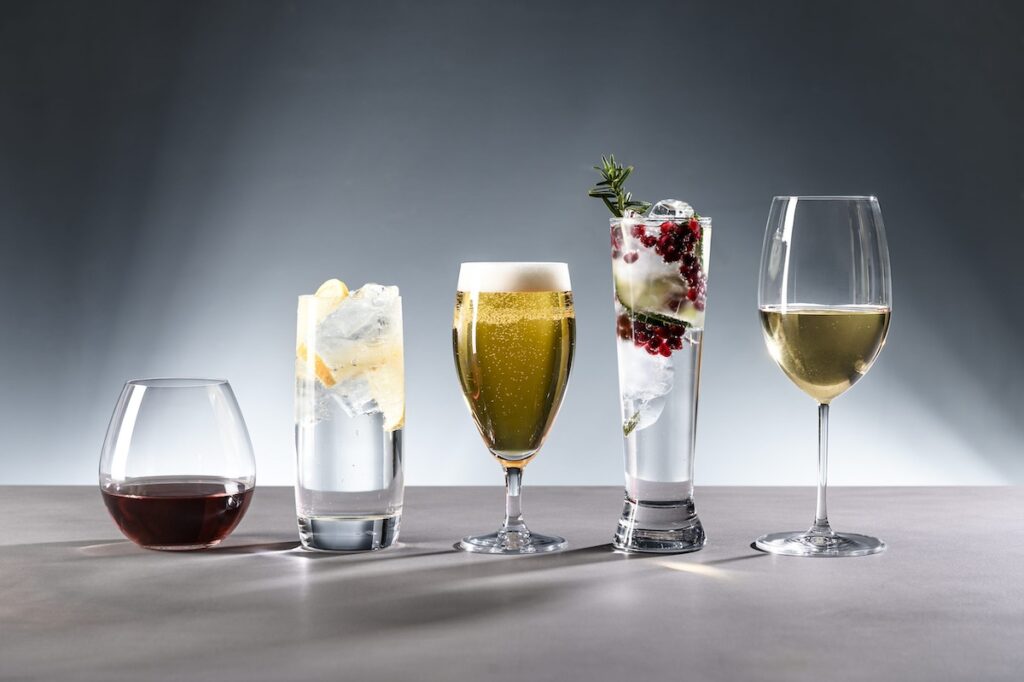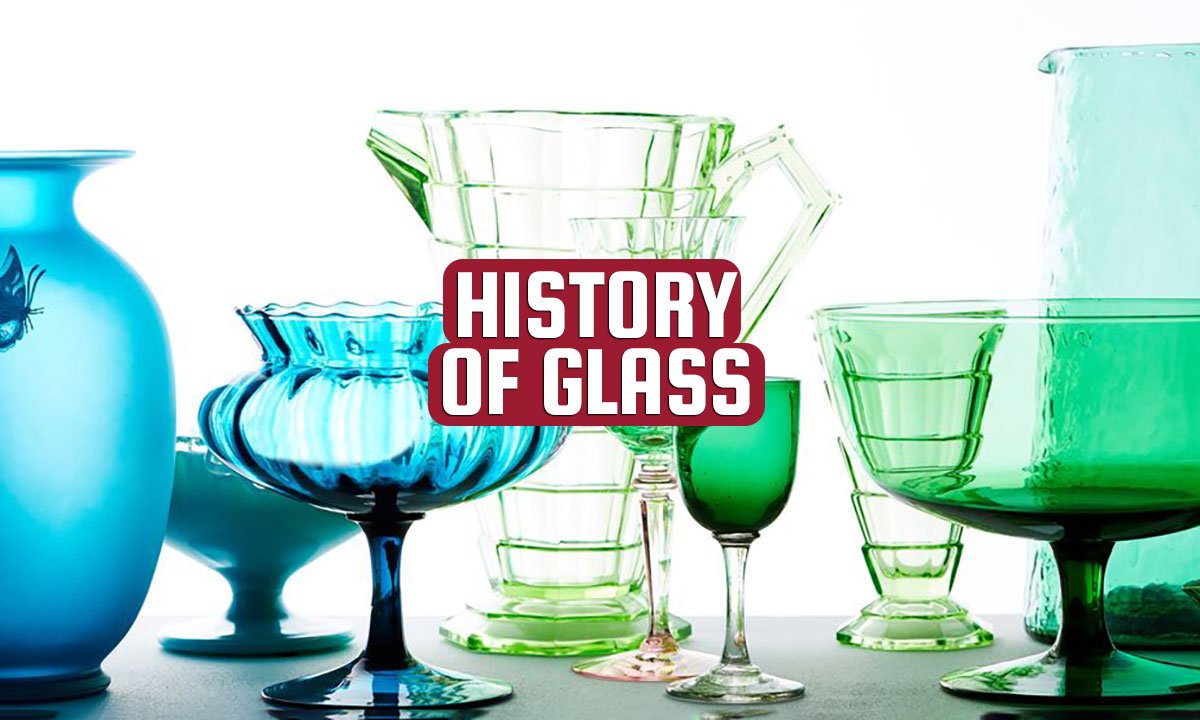Glasses play a crucial role in our daily lives, helping us see clearly and protecting our eyes from harmful elements also it is a part of our kitchen. Have you ever wondered about the history and manufacturing process behind this essential item? In this blog post, we will learn what is the history of glass and how glass made.
Table of Contents
I. History of Glasses
A. When were glasses invented? Glasses, as we know them today, have a long and rich history that dates back to ancient civilizations. The earliest evidence of the existence of glasses can be traced back to around 700 BCE in ancient Mesopotamia. These early glasses were not the familiar spectacles we wear today but were rather primitive magnifying lenses, likely used for various purposes including reading and starting fires.
B. Who invented glasses? The specific individual credited with inventing glasses is unknown. However, it is believed that the innovation of glasses originated in the Near East, with the ancient Egyptians and later the ancient Romans refining and popularizing the use of glass lenses. The Roman Empire played a significant role in the advancement of glassmaking techniques and the spread of eyeglasses across Europe.
C. Evolution of glasses over time Glasses have undergone numerous transformations throughout history. From the rudimentary lenses used by ancient civilizations to the modern, sleek designs we see today, glasses have evolved both in terms of functionality and aesthetics. Innovations such as the invention of bifocals by Benjamin Franklin in the 18th century and the introduction of lightweight materials like titanium in recent decades have revolutionized the eyewear industry.
II. Composition of Glasses
A. What is glass made of? Glass is a fascinating material composed primarily of silica (silicon dioxide) along with various additives to alter its properties. Silica is abundant in nature and can be obtained from sources like sand, quartz, and flint. The addition of other substances like soda ash and limestone helps to lower the melting point of silica and enhance the glass’s workability.
B. How is glass made? The process of making glass involves several steps that require precision and expertise. The manufacturing process typically begins with a carefully measured mixture of raw materials, including silica, soda ash, and limestone. These ingredients are mixed together and heated in a furnace to extremely high temperatures until they melt and become a molten liquid known as “glass.”
Once in its molten state, the glass is shaped and formed through various techniques, such as blowing, pressing, and casting. The desired form and dimensions are achieved by skilled craftsmen who manipulate the molten glass and bring it to its final shape. The glass is then cooled slowly in a process called annealing, which relieves internal stresses and strengthens the material.
C. Variations and types of glasses There are several types of glasses that serve different purposes based on their composition and properties. Some common variations include:
- Soda-lime glass: This is the most common type of glass and is used in windows, bottles, and everyday objects. It is made by adding soda ash and lime to the silica mixture, making it easy to melt and shape.
- Borosilicate glass: This type of glass is known for its exceptional heat resistance and durability. It is commonly used in laboratory glassware and cookware due to its ability to withstand high temperatures without shattering.
- Tempered glass: Tempered glass is created by subjecting regular glass to a process of controlled heating and rapid cooling, strengthening it and making it more resistant to impact. It is commonly used in car windows, shower doors, and phone screens.
Understanding the different types of glasses allows us to make informed choices when selecting eyewear or other glass products that best suit our needs.
D. Annealing and strengthening The annealing process is a crucial step in the manufacturing of glasses. After shaping the glass into its desired form, it undergoes a controlled cooling process known as annealing. This process involves slowly reducing the temperature of the glass to relieve internal stresses and strengthen the material.
Annealing is essential because the rapid cooling of glass can cause it to become brittle and susceptible to breakage. By gradually cooling the glass, the internal strains are minimized, resulting in a more durable product. This step ensures that the glasses can withstand daily use and environmental factors without easily cracking or breaking.
In addition to annealing, there are other methods employed to further strengthen glass based on its intended use. One such method is tempering, which involves subjecting the glass to a process of rapid heating and cooling to increase its strength. Tempered glass is known for its resistance to impact and is commonly used in applications such as car windshields and glass doors.
E. Finishing touches Once the glasses have been shaped, annealed, and strengthened, they go through various finishing processes that enhance their aesthetics and functionality. Some of these finishing touches include:
- Cutting: Glass can be cut into various shapes and sizes using specialized tools. This allows for the customization of glasses according to individual preferences and fashion trends.
- Grinding: Precision grinding techniques are employed to refine the edges and surfaces of the glasses. This process ensures that the glasses fit comfortably and smoothly against the wearer’s face.
- Polishing: Polishing is done to achieve a smooth and glossy finish on the glass surface. It helps to remove any surface imperfections, providing a clear and crystal-like appearance.
- Surface treatments: Depending on the desired properties and functionalities, glasses can undergo additional surface treatments. This can include etching, painting, or applying specialized coatings to enhance features like scratch resistance, anti-reflective properties, or UV protection.
The finishing touches applied to glasses not only enhance their aesthetic appeal but also contribute to the overall comfort and functionality of the final product.

III. The Importance and Significance of Glasses
Glasses hold significant importance in various aspects of our lives, ranging from practical applications to scientific advancements and cultural symbolism.
A. Practical applications Glasses have become an essential tool for everyday activities and professions. Some practical applications of glasses include:
- Vision correction: The most common use of glasses is to correct visual impairments such as nearsightedness, farsightedness, and astigmatism. By wearing prescription eyeglasses, individuals can experience improved clarity and focus, allowing them to perform tasks with ease.
- Eye protection: Glasses serve as protective eyewear, shielding our eyes from harmful elements such as dust, debris, and harmful UV radiation. Safety glasses and sunglasses with UV protection help prevent eye injuries and long-term damage caused by exposure to the sun’s rays.
- Specialized glasses: Glasses are also designed for specific activities and professions. Examples include sports glasses with impact-resistant lenses for athletes, safety glasses for industrial workers, and computer glasses to reduce eye strain caused by prolonged screen time.
B. Scientific and technological advancements Glasses have contributed to significant advancements in the fields of science and technology. Some notable examples include:
- Optics and instrumentation: Glasses play a vital role in optical devices and instruments such as microscopes, telescopes, cameras, and eyepieces. They enable researchers and scientists to observe and analyze objects at various scales, leading to groundbreaking discoveries and innovations.
- Telecommunications: Fiber optic cables, a technology that relies on the transmission of light through glass fibers, form the backbone of modern telecommunications networks. This allows for high-speed data transmission, facilitating global communication and connectivity.
- Electronics and displays: Glasses are a crucial component in the production of electronic devices such as smartphones, tablets, and computer monitors. Glass substrates provide the foundation for LCD and OLED screens, ensuring clarity, durability, and touch sensitivity.
C. Historical and cultural significance Glasses have also attained symbolic and cultural significance in various societies throughout history. Some notable aspects include:
- Intellectualism and sophistication: The wearing of glasses has often been associated with intelligence, wisdom, and sophistication. Glasses are often depicted in literature, films, and art as an indicator of scholarly pursuits and intellectualism.
- Fashion and style: Glasses have become a fashion statement and a means of self-expression. Eyewear designs come in a wide range of styles, colors, and shapes, allowing individuals to showcase their personality and add an accessory that complements their overall style.
- Symbolism and representation: In certain cultures and traditions, glasses have symbolized knowledge, perception, and the ability to see beyond the surface. They are associated with qualities such as clarity, insight, and understanding.
The importance and significance of glasses extend far beyond their practical use. They have become ingrained in our everyday lives, shaping our perception of the world and reflecting cultural values.
IV. Use of Glass in Kitchen
A kitchen made of glass and glassware used in the kitchen has many benefits, both aesthetically and functionally. It also lets more light into the room.
The Main Reason to Use Glass in the Kitchen
1. Strong Material
Glass looks like it would break easily, but it is very strong and has many useful properties.
2. Biological and Clean
Green kitchens are made of glass. Glass doesn’t change over time and is very immune to dirt, water, and humidity. There are not many things that can stand up to the heat of the stove and oven. It is easy to clean and doesn’t let mould or germs grow because it doesn’t have pores.
3. Beautiful and shiny
The style of glass kitchens makes the room look classy and bright. The shiny surfaces make rooms feel bigger and brighter. Glass-covered doors don’t have handles or grooves, which makes the smooth, straight lines of modern design stand out even more.
V. Conclusion
The history and manufacturing process of glasses unveil a fascinating tale of ingenuity, innovation, and craftsmanship. From ancient times to the present day, glasses have evolved to become both a functional necessity and a symbol of human advancement.
Understanding the origins of glasses and the intricate process by which they are made allows us to appreciate the complexity and artistry behind this essential item. Whether for vision correction, protection, scientific exploration, or fashion, glasses continue to play a vital role in enhancing our daily lives.
Next time you put on your favorite pair of glasses, take a moment to reflect on the remarkable journey these small yet impactful objects have taken throughout history, shaping the way we see the world both literally and metaphorically.

